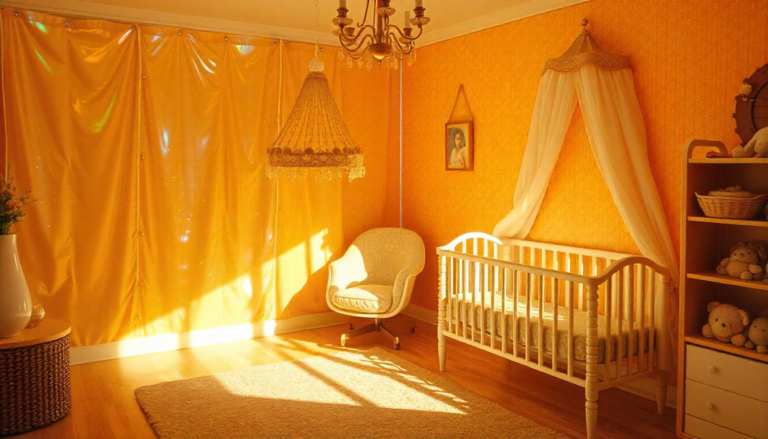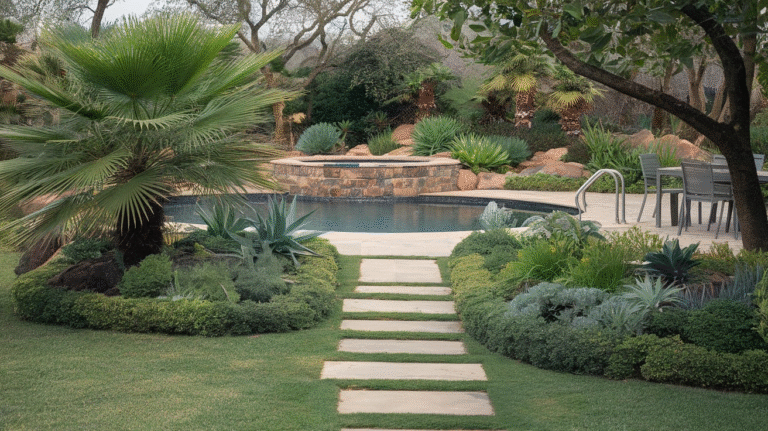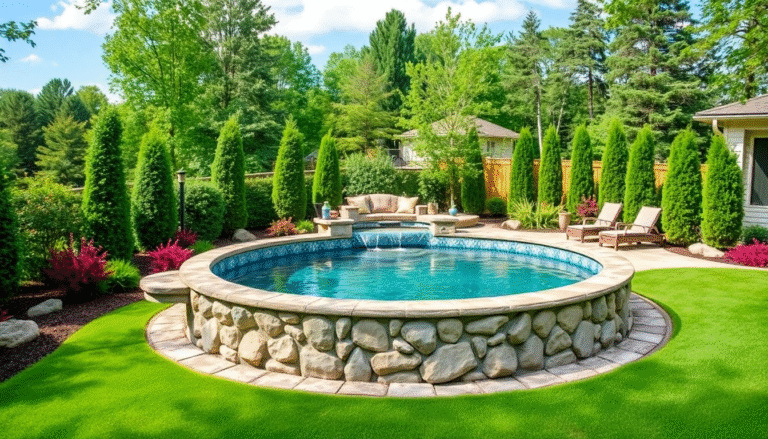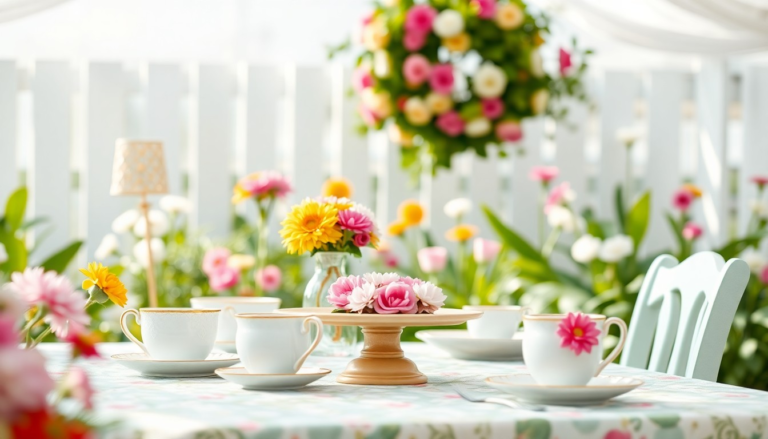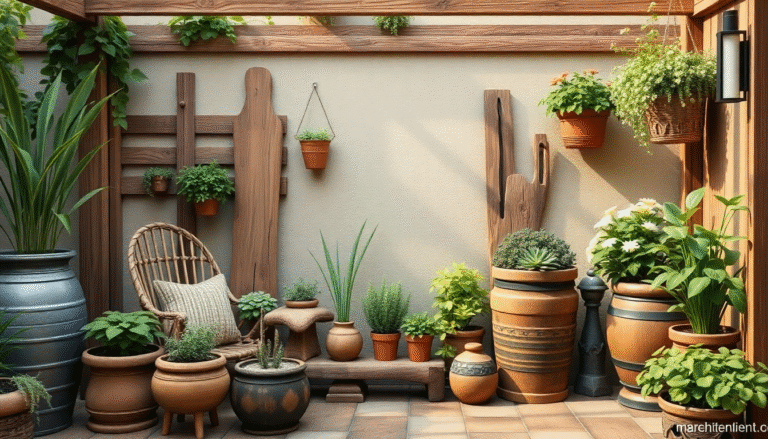20 Vertical Garden Wall Ideas

We’ve all got that one wall—blank, boring, and begging for attention.
What if you could turn it into a living masterpiece? A vertical garden wall isn’t just a design trend—it’s a clever, space-saving way to bring the lush charm of the outdoors upward instead of outward.
Whether you’re a seasoned green thumb or just learning how not to kill a succulent, vertical gardens offer a stylish, nature-infused solution for any space.
Let’s dive into 20 unique vertical garden wall ideas that blend form and function—and may even spark your next home project obsession.
1. Pallet-Style Planter Wall
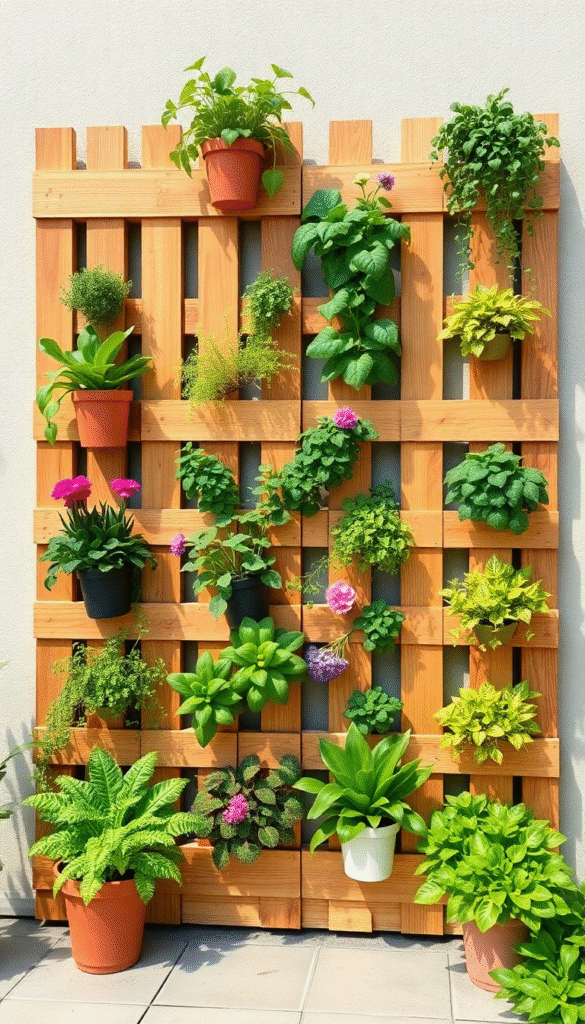
Picture this: a wooden pallet leaning against your patio wall, each slot bursting with herbs, trailing vines, or colorful blooms.
This DIY darling is a budget-friendly champion.
Why it works: Pallets are easy to source, whether you’re rescuing one from a warehouse or buying it reclaimed.
They offer natural pockets for planting and instantly add rustic charm.
Pro tip: Sand it down and seal it to avoid splinters and rot. Add landscaping fabric behind each row to keep the soil in place.
2. Modular Wall Panels

These panels are like LEGO bricks for grownups—each piece clicks together to build your perfect plant wall.
Best part? You can scale it up or down based on your space. Modular systems are ideal for urban balconies or awkward wall dimensions.
Stat to know: According to a 2023 Houzz report, modular vertical gardens have grown in popularity by 22% year-over-year in small urban homes.
Insider tip: Choose a system with a built-in irrigation tray to save time and prevent overwatering.
3. Recycled Bottle Garden Wall
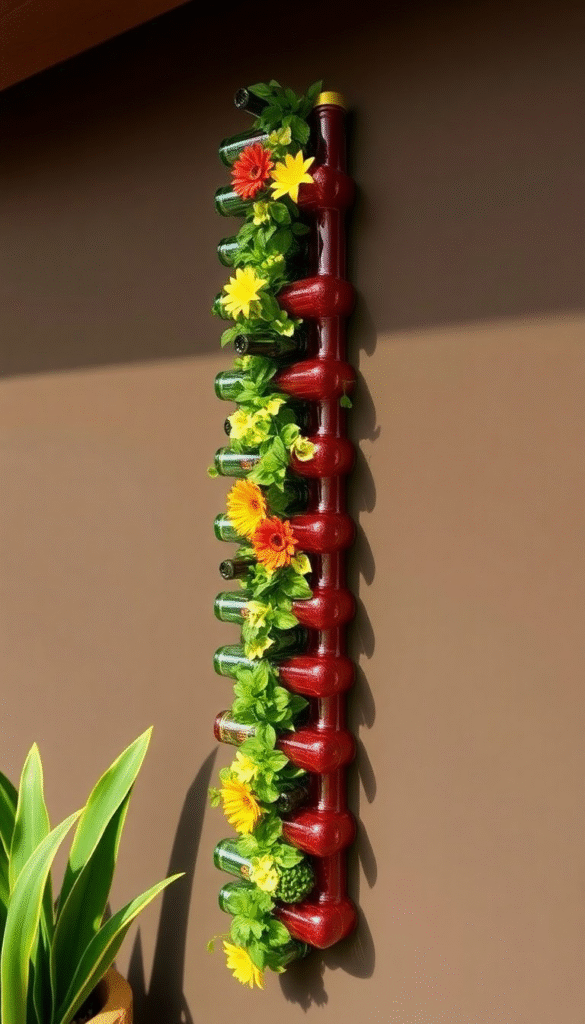
Grab a few plastic bottles and turn them into hanging planters—yes, really.
Here’s the trick: Cut the side of each bottle, fill with soil, plant your herbs or flowers, and hang them horizontally from a wooden frame or wire mesh.
Why it’s genius: It turns trash into treasure. Plus, it’s surprisingly beautiful when arranged symmetrically or in color-blocked patterns.
Personal note: My neighbor did this with Coke bottles and basil—now the whole alley smells like an Italian kitchen.
4. Frame It Like Art
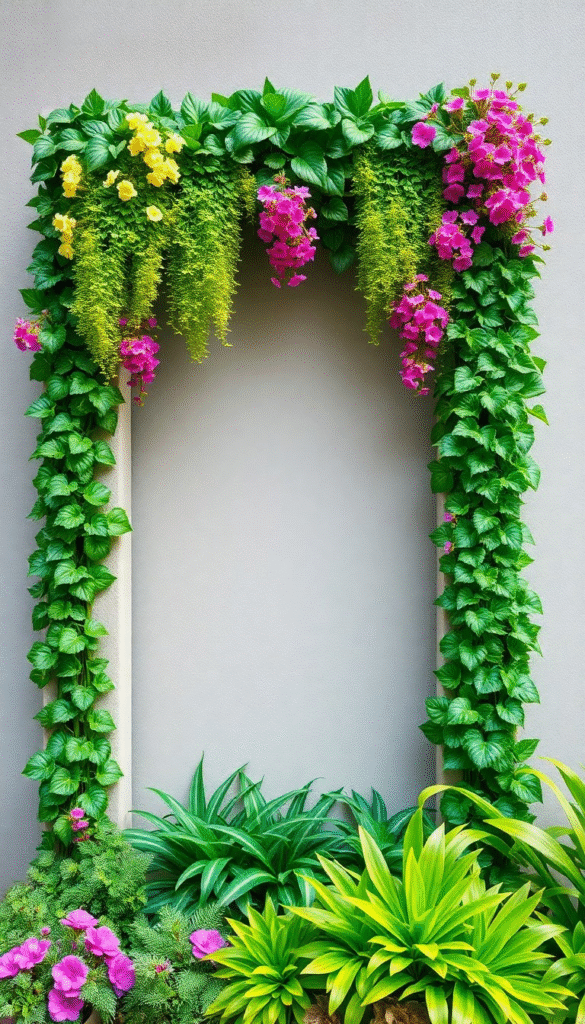
Why not treat your plants like a gallery piece?
Framed vertical gardens involve shallow boxes or trays mounted inside a wooden or metal frame. Succulents, moss, and ferns work great here.
The trick: Use lightweight soil and densely pack the plants to avoid gaps.
Tilt the frame at a 45-degree angle for the first few weeks to let roots settle before hanging vertically.
Pro tip: This is perfect for living rooms or hallways with good indirect light.
5. Trellis with Climbing Plants
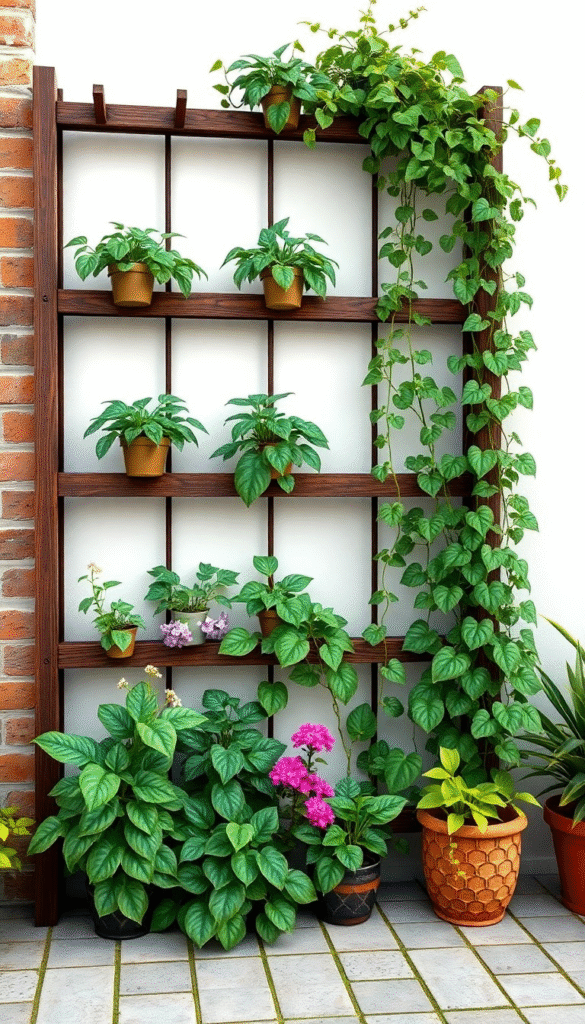
A trellis isn’t just for the garden—it can be an indoor showstopper too.
Set up a wooden or metal trellis against a wall and train climbing plants like pothos, ivy, or bougainvillea to climb.
Why it’s magical: Over time, the vines weave a textured, organic tapestry that looks straight out of a fairytale.
Stat worth knowing: Studies show that green walls with climbing plants can reduce indoor ambient temperatures by up to 5°C (9°F) in warm climates.
6. Wall of Herbs in the Kitchen
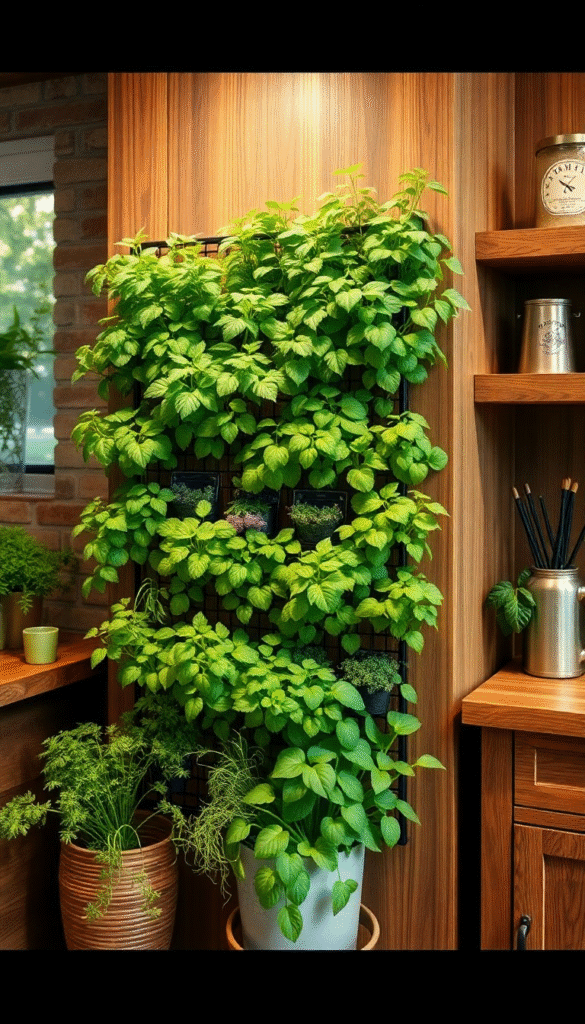
No more running to the store mid-recipe—grow your herbs on the kitchen wall.
Install floating shelves or mounted pots, and fill them with basil, thyme, oregano, and mint. It smells divine and looks even better.
Pro tip: Use chalkboard labels on the pots for a rustic kitchen vibe—and so you don’t mix up your parsley and cilantro.
Real talk: Nothing makes a dinner party more impressive than casually snipping herbs off your wall while saying, “Oh, I just grew these.”
7. Pegboard Garden Wall
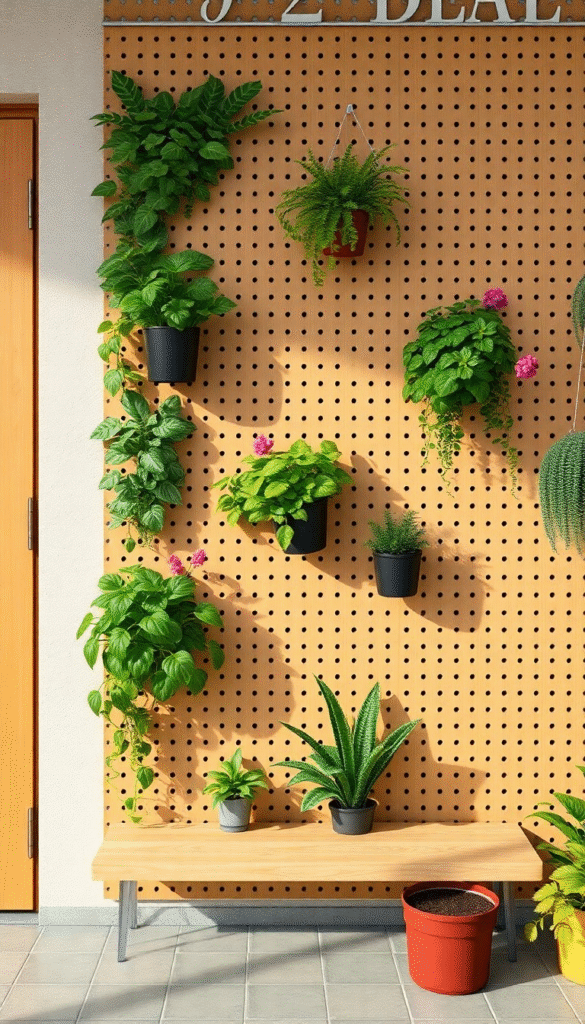
Pegboards are a storage superstar—but they’ve also become a gardener’s secret weapon.
How it works: Mount a pegboard and use S-hooks or containers with hooks to hang your pots.
Rearrange them as needed. Add a few shelves for decor or seed packets.
Why it rocks: Flexibility. You can rotate plants in and out based on season, light, or mood.
Bonus: Great for renters because you can disassemble and take it with you.
8. Vertical Hydroponic Garden
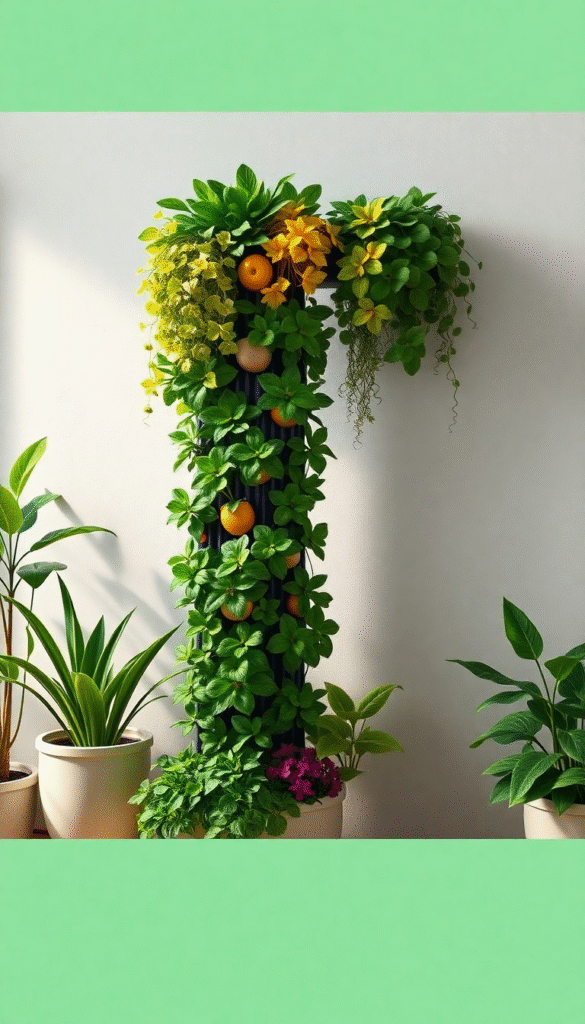
Hydroponics—growing without soil—sounds futuristic, but it’s surprisingly doable at home.
Use stackable PVC pipes or vertical towers where roots are suspended in water. Lettuce, spinach, and strawberries thrive here.
Stat check: Hydroponic systems use 90% less water than traditional gardening—huge win for eco-conscious growers.
Heads up: You’ll need a small water pump and grow light if you’re indoors.
9. Hanging Gutter Garden
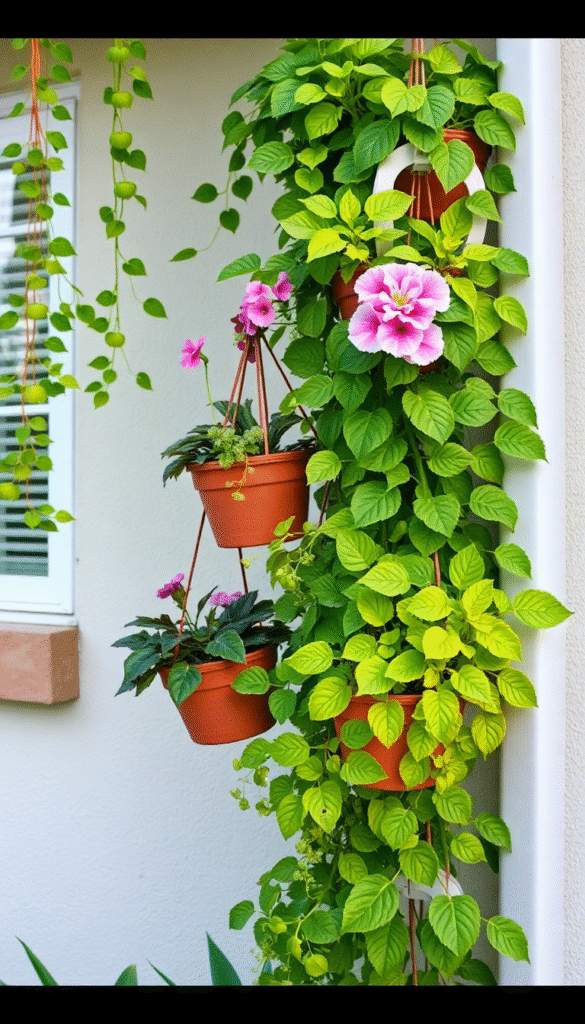
Rain gutters: not just for roofs anymore.
Cut old gutters into sections, mount them horizontally on a wall, and fill them with shallow-rooted plants like lettuce, pansies, or strawberries.
Why it works: It creates clean, tiered rows—easy to water, easy to maintain.
Anecdote time: I once saw this setup at a coffee shop with strawberries in each gutter. Customers could pick one with their latte. Genius.
10. Moss Art Wall
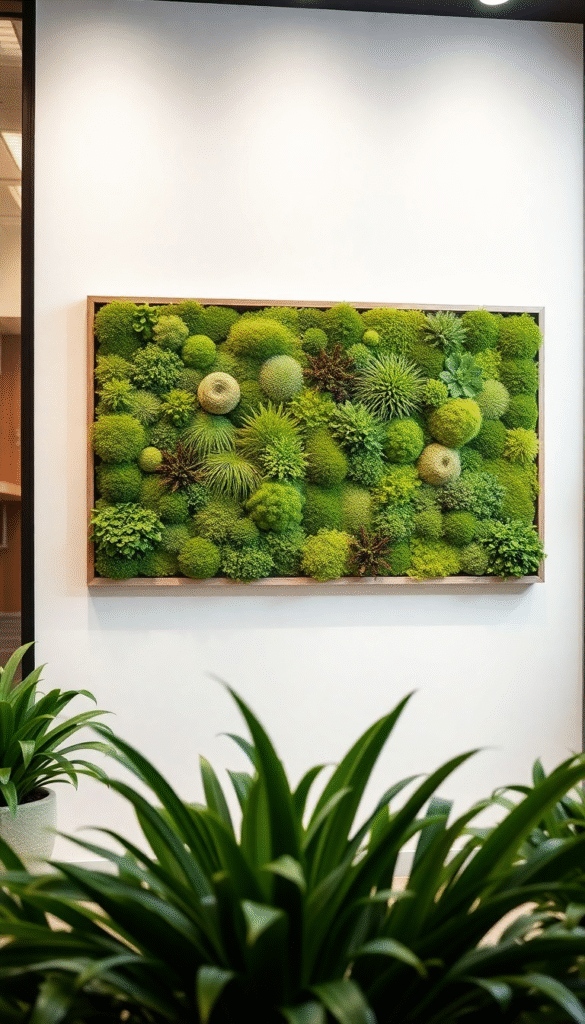
Moss walls are green art in the truest sense.
Use preserved moss in a framed structure to add texture and a modern organic look. These walls don’t require watering, light, or even care.
Best for: Offices, minimalist interiors, or anywhere you want calm energy.
Stat alert: A study in Urban Forestry & Urban Greening showed moss walls improved indoor air quality by reducing dust particles by up to 35%.
11. Bamboo Plant Wall
Bamboo has both beauty and sustainability going for it.
Create a vertical frame of bamboo rods and use it to hang planters or secure climbing plants. It brings a serene, Zen-like quality to your space.
Pro tip: Use coconut fiber liners for hanging pots to keep the aesthetic natural and earthy.
Why it’s eco-awesome: Bamboo grows fast—up to 35 inches per day—and is a renewable resource.
12. Hanging Pocket Planters
Think of these like shoe organizers—but for plants.
Fabric pocket planters hang on a rod or board, with each pocket housing a different herb or flower.
Why it works: Easy setup and swap-out. Plus, the layered design saves major space.
Caution: Make sure the fabric is breathable but retains moisture well. Otherwise, the roots can dry out fast.
13. Geometric Planter Wall
Get artsy with it.
Install hexagonal or triangular planter boxes in a pattern to create a sculptural living wall. Use color and plant contrast to add depth.
Think succulents in one triangle, air plants in another. It’s like painting with plants.
Style tip: Stick to three complementary tones in your color scheme for visual balance.
14. Crate Garden Wall
Wooden crates aren’t just for farmers’ markets anymore.
Mount crates to a wall, stack them asymmetrically, and fill with potted plants, lanterns, or decor. Think of it as a garden bookshelf.
Why it’s versatile: You get both plant space and storage.
Real tip: Paint or stain the crates to match your home vibe—white for modern, walnut for rustic, or pastel for boho.
15. Indoor Jungle Wall
Ready to go full jungle mode?
Fill an entire wall with lush greenery, mixing textures and heights. Include plants like monstera, philodendron, spider plants, and ferns.
It’s immersive. It’s dramatic. It might even make you forget you’re inside.
Fun fact: Indoor plant walls have been shown to reduce stress by up to 37%, according to a University of Technology Sydney study.
Pro advice: Install a drip irrigation system and a moisture barrier to protect your wall.
16. Stairwell Green Wall
Don’t let your stairwell sit empty and sad.
Build a sloped vertical garden that mirrors the steps. It adds continuity and turns a transitional space into a focal point.
Tips to keep in mind: Use planters that follow the stair angle. Add lighting to spotlight plants at night.
Personal anecdote: A friend turned her stairwell into a fern-filled haven. Now guests stop mid-climb just to admire it.
17. Vertical Garden with Lights
Let there be light—and plants.
Combine grow lights and a plant wall for maximum growth and ambiance. Perfect for homes with low natural light.
Why it shines: LEDs can be tuned to optimal plant wavelengths. Bonus: soft lighting makes your room feel cozy and enchanted.
Stat check: LED grow lights use 75% less energy than traditional bulbs and last up to 50,000 hours.
18. Fence-Mounted Vertical Garden
Your backyard fence is a blank canvas.
Attach planters, lattice, or slatted wood frames to your fence and fill it with hardy outdoor plants like lavender, creeping Jenny, or ornamental grasses.
Why it works: Turns privacy fencing into a garden feature. Ideal for small backyards or patios.
Pro move: Use self-watering planters for easier maintenance.
19. Edible Wall Garden
Who says your wall can’t feed you?
Grow tomatoes, peppers, kale, and even carrots in vertical systems. Use deep pockets or modular planters with strong root support.
Reality check: These require more maintenance, sun, and structural support—but the harvest is worth it.
Fun fact: According to the USDA, vertical farming can yield 10 times more produce per square foot compared to traditional farming.
20. Boho Macramé Plant Wall
Bohemian and breezy, macramé hangers bring soft texture and a touch of the 70s.
Hang several from a wooden rod or branch, each with a different pot and trailing plant. It’s part decor, part garden, all vibe.
Why it’s cool: No drilling needed if you use a hanging rod or curtain system.
Extra detail: Add feathers, beads, or driftwood to make it even more whimsical.
Final Thoughts
Your walls don’t have to be lifeless.
Whether you live in a high-rise apartment or a suburban bungalow, vertical garden walls transform dead space into vibrant living art.
They clean your air, boost your mood, and turn heads in the best way.
Start with one idea—just one—and build from there.
The joy of growing up (literally) is real, and your future garden wall is just a few plants and screws away from becoming the most interesting wall in your home.
And trust me: once you build one, you’ll start seeing walls everywhere with fresh potential.
It’s a beautiful kind of obsession.
Want help planning your layout, choosing plants for your climate, or sourcing the best DIY kits? I’ve got more tips up my sleeve—just ask. Happy planting!

